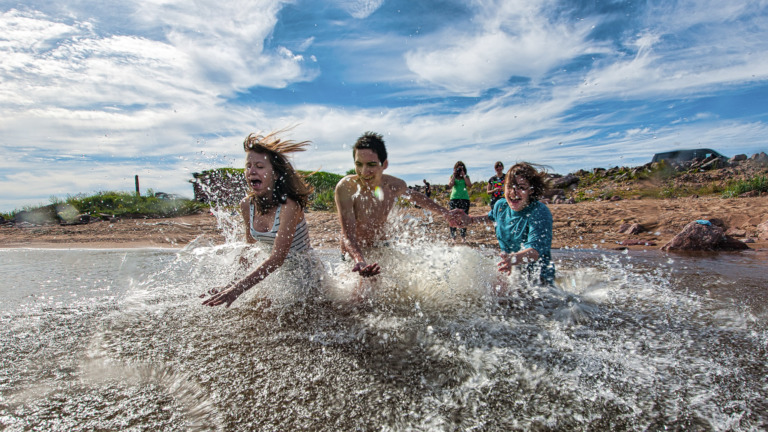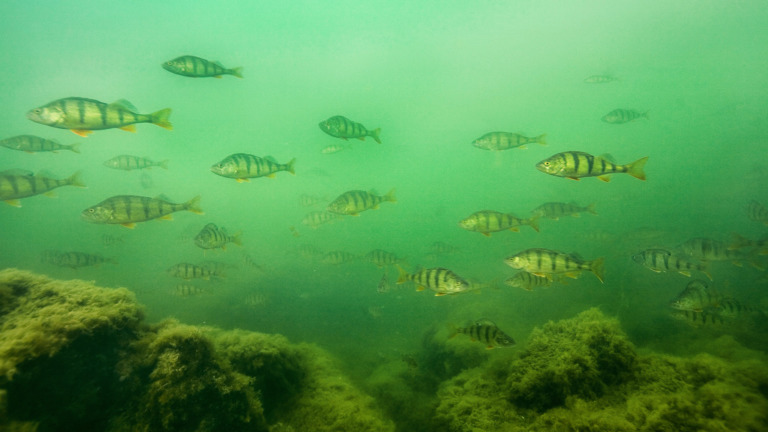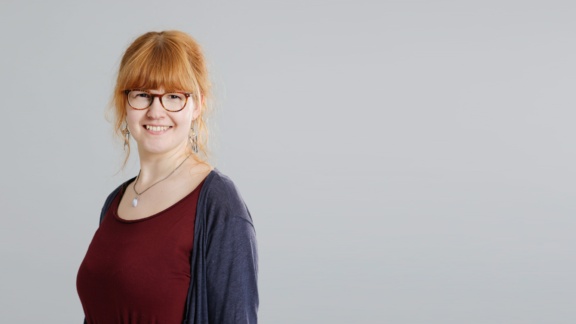THE BALTIC SEA – the world’s youngest sea
The Baltic Sea has a unique ecosystem. It is surrounded by a large and densely populated catchment area that exposes it to various problems. Yet despite these issues, the Baltic Sea provides a beautiful and varied home for all kinds of organisms.

Sensitive and vulnerable
The Baltic Sea is a marginal sea of the Atlantic Ocean and is also the youngest of the world’s seas. It was formed about 10,000–15,000 years ago after the last ice age.
The Baltic Sea is shallow and enclosed compared to oceans and many other seas. It is shallow because it’s located on top of a tectonic plate. And by “enclosed”, we mean that the Baltic Sea is only connected to the North Sea via the Kattegat Strait between Sweden and Denmark.
This lack of connections to other seas means that the flow of saltwater into the Baltic Sea is limited. Yet freshwater is constantly flowing into the Baltic Sea via rivers and rainfall. The entire Baltic Sea is an area of low-saline, brackish water.
The water in the Baltic Sea is also unusually stratified, meaning warm water remains on the surface while colder water sinks to the bottom. This stratification is most pronounced during the summer and winter.
Changes in the water’s salinity also cause stratification, as salt water is heavier than freshwater. This salinity stratification is permanent at the Baltic Sea’s deepest points. The deep waters are heavy and salty and do not mix with the fresher water at the surface.
The Baltic Sea’s unique characteristics make it extremely sensitive and vulnerable, which is why the sea needs special protection in changing environmental conditions.
Not an easy place to live
The Baltic Sea is a challenging habitat for many organisms. The water is too fresh for oceanic organisms yet too salty for freshwater organisms.
Although the plants, animals, and algae in the Baltic Sea have adapted to living in these particular conditions, even small changes in their habitat can have dramatic consequences. For example, seawater that has been warmed by climate change no longer provides a suitable habitat for all its inhabitants. Protecting marine nature in the Baltic Sea is, therefore, very important.

4,800 hectares of marine nature around Gullkrona will be protected through our Give Life to the Baltic Sea project. These waters contain key species that are vital for the Baltic Sea, and the Gullkrona conservation area will also raise awareness of opportunities to engage in private conservation efforts.
Nearly 90 million people impact the state of the Baltic Sea
Many people live along the coast of the Baltic Sea. In addition to Finland, the countries that border the Baltic Sea are Sweden, Denmark, Germany, Poland, Latvia, Lithuania, Estonia, and Russia.
The Baltic Sea catchment area is even larger than the area from which water flows into the Baltic Sea. It includes 14 countries that are home to a total of nearly 90 million people. How we live and operate in this catchment area fundamentally impacts the state of the Baltic Sea.
The catchment area’s large size, the sea’s shallowness, and the stratification and slow turnover rate of its water make the Baltic Sea susceptible to a broad range of problems, the most significant of which is eutrophication
Eutrophication is an ongoing challenge
The nutrients and toxic substances that have entered the sea from the Baltic Sea states over the centuries have caused its condition to deteriorate through, for instance, eutrophication.
Eutrophication is caused by the nutrients that plants need, such as nitrogen and phosphorus. They enter the water in various ways, for example, through agricultural and industrial runoff or household and commercial wastewater. In the Baltic Sea, they cause oxygen depletion, overgrown waterways, and the rapid growth of filamentous algae.
It is challenging to stop eutrophication once it has started. In the Baltic Sea, there are now vast dead and anoxic areas of the seabed that can no longer sustain life. In these areas, the phosphorus sequestered in the sediment over time is now being released into the water – thereby further accelerating eutrophication.
Heavy maritime traffic – including oil tankers – brings risks to Baltic Sea organisms.

Cargo vessels can legally discharge domestic wastewater, sewage, and ground food waste into the Baltic Sea. BSAG’s Ship Waste Action initiative aims to reduce this nutrient load through voluntary cooperation in the circular economy.
Salt pulses bring relief
Now and again, the Baltic Sea receives a surprising gift when a large amount of heavy and oxygen-rich oceanic saltwater flows through the Straits of Denmark over a few weeks.
These are called salt pulses and help fight oxygen depletion in the Baltic Sea and prevent the eutrophication caused by its internal load. Conversely, salt pulses in the Archipelago Sea may temporarily worsen eutrophication as the pulse pushes deep, nutrient-rich water toward the coast.
Salt pulses also help to maintain the Baltic Sea’s salinity, thereby keeping it brackish. However, salt pulses occur very infrequently – at intervals of 10 to 20 years.
Despite the relief brought by salt pulses, the Baltic Sea is still one of the most polluted seas in the world.
Conservation requires concrete action on land and at sea
Eutrophication, climate change, and various human pressures endanger biodiversity in the Baltic Sea.
With our extensive network of partners, we are engaging in long-term and ambitious work to save the Baltic Sea. We are currently focusing on promoting regenerative agriculture and responsible shipping, reducing the impacts of forestry on surface waters, and protecting marine biodiversity.
And by helping the Baltic Sea, we are also tackling climate change.
Contact us

Anna Klemelä
Project Manager, Marine Biodiversity; Communications Specialist